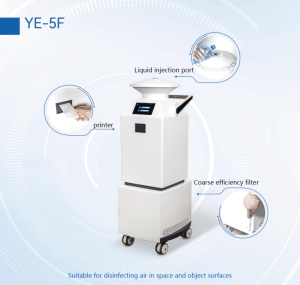空气净化消毒简介
医疗机构空气净化消毒系统主要分为主动消毒和被动消毒两种方式。主动消毒包括主动对设备外部的环境进行消毒。另一方面,被动消毒的原理是吸入受污染的空气,在设备内部进行过滤和消毒,然后释放净化的空气。
主动消毒与被动消毒
主动消毒
主动空气消毒使用产生稳定且易于扩散的消毒剂的设备。这些药剂通过风扇散布到整个房间,到达每个角落,消除表面和空气中的病毒、细菌和其他微生物。常见的主动消毒方法有臭氧消毒和过氧化氢消毒。
被动消毒
被动消毒涉及将空气吸入设备,在设备中进行过滤和消毒,然后将干净的空气释放回环境中。这些设备中的常见组件包括 HEPA 过滤器、UVC 灯和光催化剂。每个元件针对不同的污染物:HEPA 过滤器可捕获 PM2.5,活性炭可消除异味,光催化剂可分解甲醛和其他挥发性有机化合物。
主动消毒和被动消毒的优点
主动消毒的优点
主动对整个空间进行消毒,确保消毒效率高并快速完成过程。
出色的扩散能力消除了消毒剂死区,同时处理空气和表面。
不需要大风扇,避免加速室内空气流通和潜在的病毒传播。
消毒时间和药剂浓度易于控制,显着降低腐蚀风险。
被动消毒的优点
安全环保,可在特定环境下长期使用,无二次污染。
适合与人共存,因为它可以净化吸入设备的空气。
长效消毒剂可连续使用,利用率高,能耗低。
结论
主动消毒技术的工作原理是在病毒开始传播时将其杀死,而不是等待它们进入消毒设备。这种方法包围气溶胶,切断病毒传播途径。相反,被动消毒在细菌和病毒水平较高的环境中很有用,它可以过滤、吸收和消毒空气。在实际应用中,两种方法结合使用效果最佳,主动消毒主动针对污染物,被动消毒持续净化空气,确保环境更安全、更清洁。
通过了解并选择正确的消毒方法,医疗机构可以显着改善空气质量,降低感染风险,确保患者和工作人员的健康和安全
